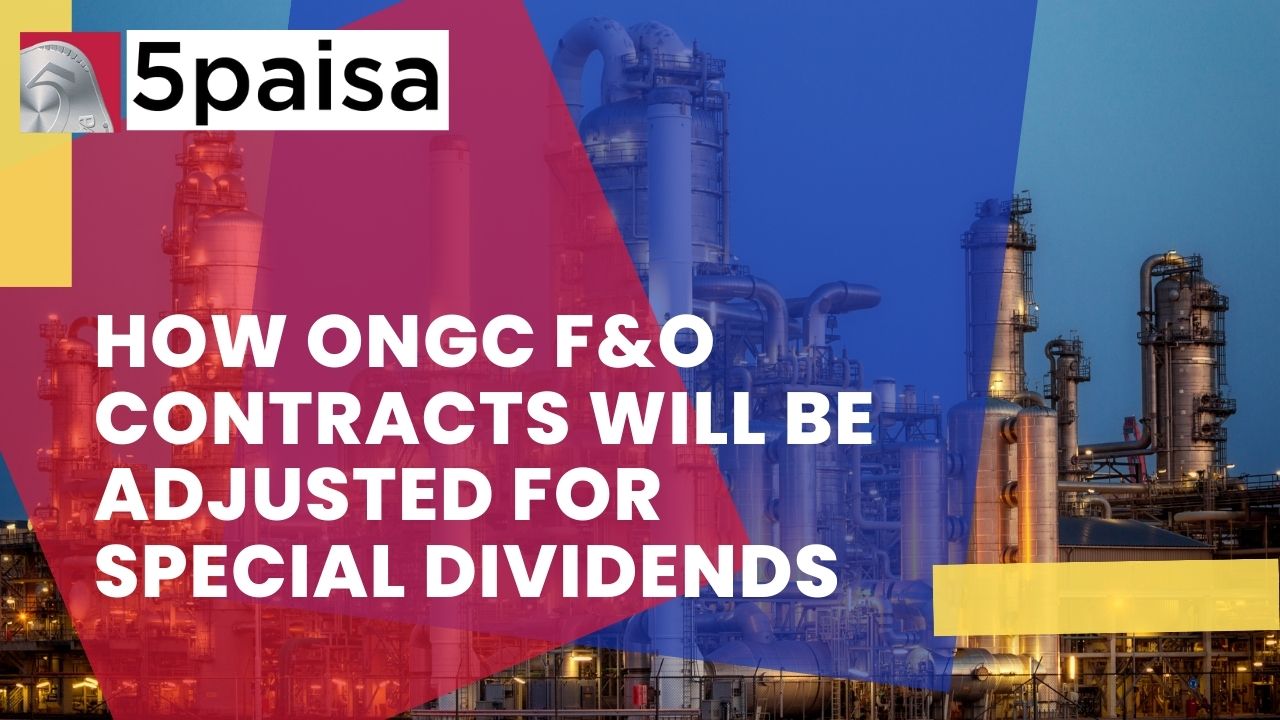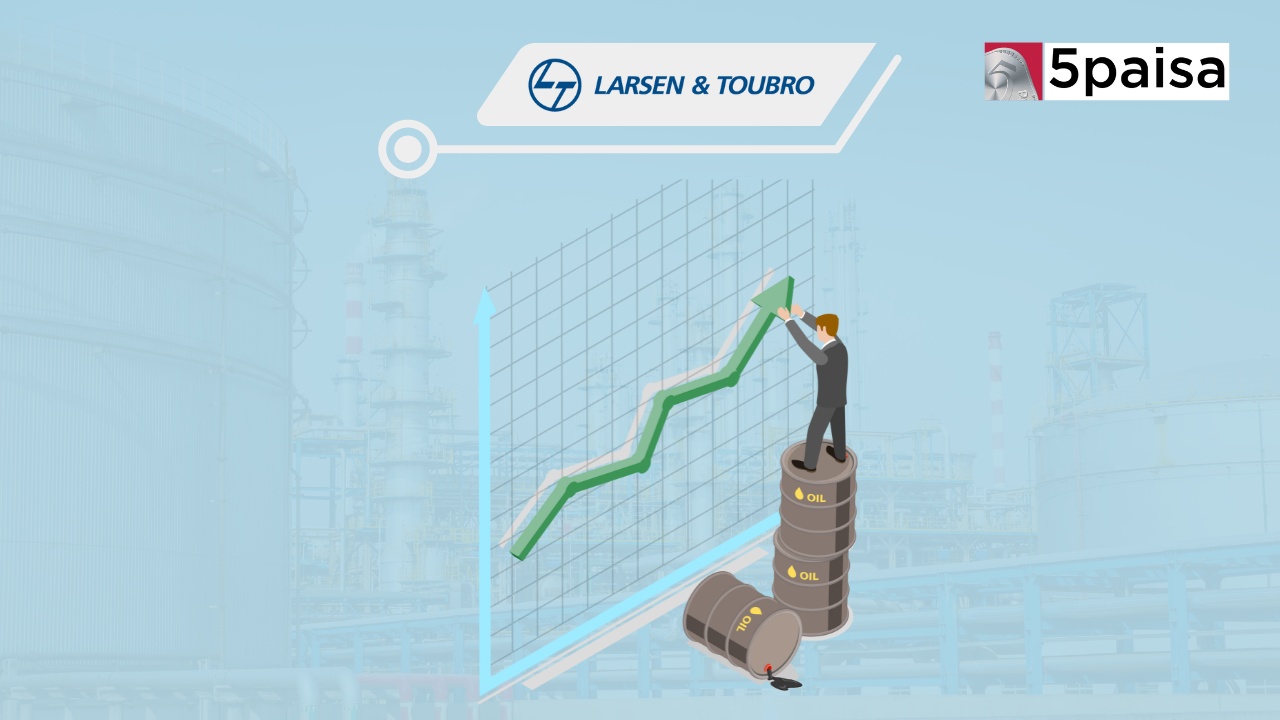How ONGC F&O contracts will be adjusted for dividends

Last Updated: 20th February 2023 - 05:07 pm
In its meeting held on 16th February 2023, the board of directors of Oil & Natural Gas Corporation (ONGC) Ltd has approved an Interim Dividend pay-out of Rs4/- per equity share of face value of Rs5/- each. This is entirely a regular dividend of Rs4 per share. For the purpose of interim dividend eligibility, the record date has been fixed as February 24th, 2023. That means an investor seeking to get the interim dividend will have to possess the shares in his / her demat account by the close of 24th February 2023. Obviously, if the shares have to be in the demat account by 24th February 2023, then the shares have to be purchased latest by T-1 date to be eligible for delivery. Remember that effective February 2023, all Indian companies, including the index and F&O eligible companies have shifted officially to T+1 rolling settlement as against the earlier T+2 rolling settlement.
Now, since 24th February 2023 is a Friday, the T-1 trade date will be Thursday, 23rd February 2023. There are no trading holidays in between. That means, the investor who is intending to get this interim dividend of Rs4 per share has to purchase the shares latest by 23rd February 2023 so that the shares are in the demat account on T+1 date, which is 24th February 2023, which is also the record date. That means, 23rd February 2023 will be the last cum-dividend date and on the next trading day i.e. 24th February 2023, Friday, the stock of Oil & Natural Gas Corporation (ONGC) Ltd will go ex-dividend. Normally, the price adjustment for any corporate action happens on the ex-date depending on the type and the size of the corporate action. Unlike in the T+2 rolling settlement system, in the new T+1 rolling settlement system, the record date also becomes the ex-date for the dividend corporate action adjustment in the case of extraordinary dividends.
Corporate action adjustment in F&O contracts?
This is a slightly nuanced question and we need to look at all the facets of this story. But before we get into the dividend part of it, remember that all corporate actions like bonus issues, rights and stock splits require the F&O adjustment to take place. The F&O adjustment takes place in terms of the strike price of the options contract, the market lot or the market multiplier and the size of the position held by the investor. While the adjustment for bonuses and splits are fairly straightforward, the F&O adjustment for dividend payments is slightly more convoluted, and here is why. It boils down to whether the dividend so declared is an ordinary dividend or it is an extraordinary dividend. Here is how it is done.
How are dividends adjusted in the case of F&O contracts?
That brings us to the basic question when and how are dividend adjustments made to the F&O contracts. It depends on whether the dividend so declared is an ordinary dividend or an extraordinary dividend. Here is how the distinction between ordinary dividend and extra-ordinary dividend is demarcated. If the dividend declared is less than 2% of the market value of the underlying stock, it would be deemed to be ordinary dividends. In such cases, no adjustment in the Strike Price would be made for ordinary dividends and the adjustment happens in the market price. However, in case the dividend is 2% or more of the market value, then the adjustment is made to the strike price of the F&O contract.
There is an interesting background to this methodology adopted by SEBI. Initially, when the extraordinary dividend rule was set by SEBI, it was decided to keep 10% of the market value worth of dividends as the cut-off for extraordinary. However, this created a problem since today most of the large companies pay interim dividends. Hence it may be tough to get a cumulative picture. Hence, the threshold was first reduced from 10% to 5% and then to 2%, which is where it stands today. In the case of Oil & Natural Gas Corporation (ONGC) Ltd, with the relevant price of Rs155.90 and the dividend of Rs4 per share the dividend percentage works out to 2.57%. Since it exceeds 2%, this would be classified as case of extraordinary dividend.
The other question is what is the cut-off date considered to decide whether the dividend is ordinary or extraordinary? Here, the market price would mean the closing price of the stock on the day previous to the date on which the announcement of the dividend was made by the Company post the meeting of the Board of Directors. However, in case where the announcement of dividend is made after market hours, same day's closing price is taken as the market price. In the case of ordinary dividends i.e. less than 2% of the price, no adjustment is made by the exchange and the dividend gets adjusted in the market price.
Adjustment process for dividends in F&O
In case the dividend is classified as extraordinary dividend based on the criteria above, the total dividend amount would be reduced from all effective futures contract prices and the strike prices of the option contracts on that stock. Therefore, the revised strike prices would be applicable from the ex-dividend date, which is normally the trading date just prior to the record date. Here are key points.
-
In the case of futures contracts on Oil & Natural Gas Corporation (ONGC) Ltd, the base price of the Futures contracts on 23rd February 2023 will be the reference rate less the aggregate amount of Rs4 per share. The reference rate will be the daily MTM settlement price. So long on futures at Rs154 would get modified to long on futures at Rs150, post adjustment for extraordinary dividend.
-
In the case of options contract, the dividend i.e. Rs4/- per share will be deducted from all the cum-dividend strike prices on the ex-dividend date. So the Rs150 strike call and put option of Oil & Natural Gas Corporation (ONGC) Ltd will become a Rs146 strike call and put option.
-
All such adjustment for corporate actions would be carried out on the last day on which a security is traded on cum-basis in the underlying equities market, after the close of trading hours.
There is a small point to note here. The ex-date or the adjustment date in the case of Oil & Natural Gas Corporation (ONGC) Ltd, also happens to be the F&O expiry settlement day for the February expiry. Hence, none of the above adjustment will apply to contracts expiring in February, but only to contracts expiring in March 2023 and beyond.
- Flat ₹20 Brokerage
- Next-gen Trading
- Advance Charting
- Actionable Ideas
Trending on 5paisa
06
 Tanushree Jaiswal
Tanushree Jaiswal
Indian Market Related Articles
Disclaimer: Investment in securities market are subject to market risks, read all the related documents carefully before investing. For detailed disclaimer please Click here.
 5paisa Research Team
5paisa Research Team




